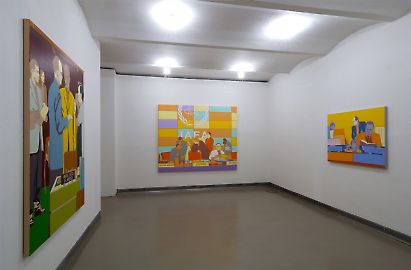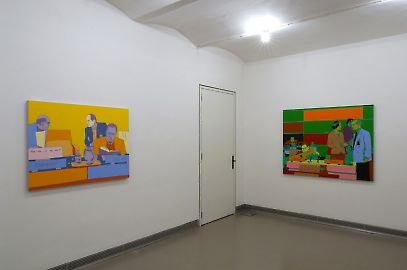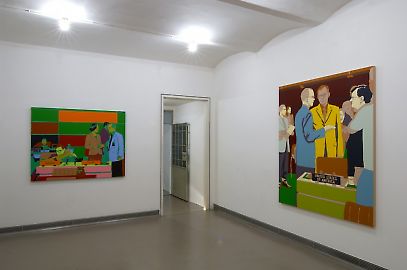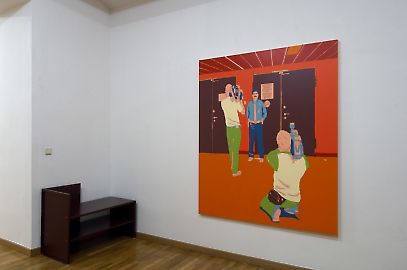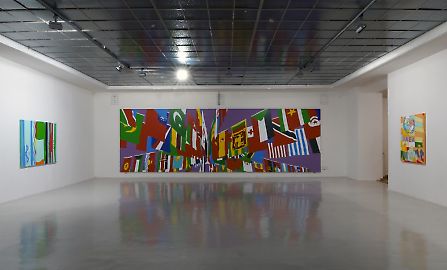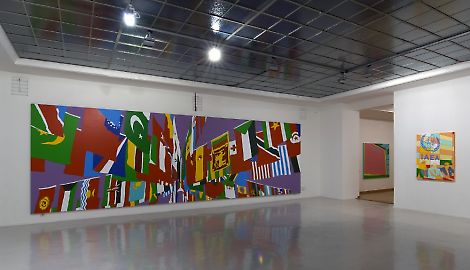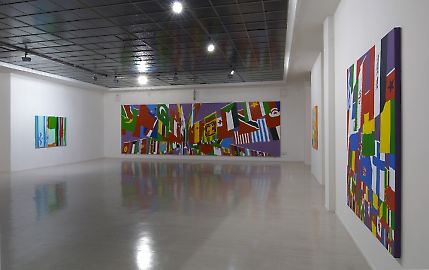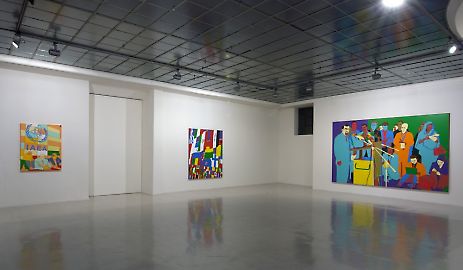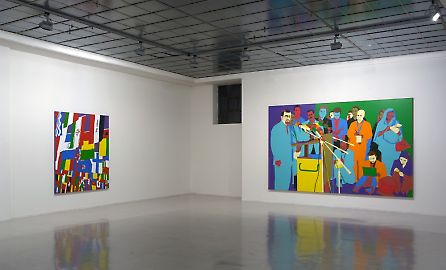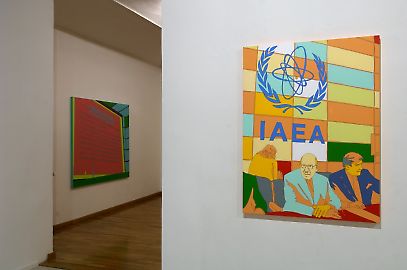Lisa Ruyter -- Atoms for Peace
Artist to produce paintings based on coverage of IAEA Board of Governours meetings in Vienna
Artist Lisa Ruyter has been covering International Atomic Energy Agency (IAEA) Board of Governors meetings as an invited journalist. Her reporting will take the form of a series of new paintings based on photographs made at official events of the IAEA. The completed works will be shown this November in a solo exhibition at her representative gallery in Vienna, Georg Kargl Fine Arts. This is not the first time Ruyter has blurred the lines between artist and reporter. In 2004 at the request of [Andy Warhol`s] Interview Magazine then Editor-In-Chief Ingrid Sischy, Ruyter covered the Paris Couture Shows for the magazine and the resultant paintings appeared in Dec/Jan 2005 issue and were the focus of a highly acclaimed 2005 solo show in Berlin.
Since 1996, Lisa Ruyter's paintings have been based on individual photographs taken by the artist and have formed a map of her movements around the globe as well as her personal development. Ruyter selects a small percentage of these pictures and begins the process of fixing them in the medium of painting. She "transcribes" the photographs onto the picture plane, selects the areas of the image that she wishes to render, leaving out details she thinks trivial, while focusing on others. Once the drawing is in place, Ruyter begins to map out colors within the structure of that drawing. The final fixing of the images occurs when Ruyter, usually in a single sitting, redraws the lines with a paint pen, bringing the image into sharp focus.
The power of Ruyters paintings is in the way she takes on seemingly ordinary images and makes them extraordinary. What at first appear simple but giant paint-by-number works slowly reveal themselves to be complex arrangements of flat colors with poignant, powerful subject matter. The effect freezes the narrative and pushes it toward abstraction, and highlights potential subtexts. In these new works, Lisa Ruyter questions again the relationship of subject matter and visual effect. An IAEA meeting perhaps looks like an ordinary occasion, but these particular meetings are charged with the undercurrent of one of the largest news stories of this moment in time. She approaches the “nuclear“ story with the same eye and process that she did with Haute Couture. The results of this exploration are images that seem directly lifted from the pages of a popular graphic novel.
"For what I want to do, so" expresses Lisa Ruyter, "it is important to avoid encouraging a singular hegemonic reading at all costs. By that I mean that one thing has to be dominating the reading, rather than allowing all of the elements to carry information. It is certainly possible to make such a determined reading, but there is enough on the surface of the paintings and in the subject matter to always add an alternative to the reading".
About the IAEA
Headquartered at the Vienna International Centre in Vienna, Austria, The International Atomic Energy Agency (IAEA) is the world`s foremost forum for scientific and technical cooperation in the peaceful use of nuclear technology. Established in 1957 as an independent organization under the United Nations, the IAEA represents the realization of US President Dwight D. Eisenhower`s visionary “Atoms for Peace“ speech to the UN General Assembly in 1953, wherein he proposed the creation of an international body to both control and promote the use of atomic energy. Today, the IAEA`s broad spectrum of services and activities is based on the needs of its 144 Member States. IAEA programs and budgets are set through decisions of ist 35-member Board of Governors and the General Conference of all Member States. The Board of Governors generally meets five times per year. It examines and makes recommendations to the General Conference on the IAEA`s accounts, programs and budget and considers applications for membership. It also approves safeguards agreements and the publication of the IAEA`s safety standards, and has responsibility for appointing the Director General with the approval of the General Conference. In case of a country`s non-compliance with its safeguards commitments, the Board decides upon further steps, ranging from a call for clarification to a possible referral to the United Nations Security Council. Recent meetings of the Board have focused on the Iranian nuclear issue and attempts to determine the full nature of Iran`s nuclear program.
Text by: Timothy Hartley Smith



